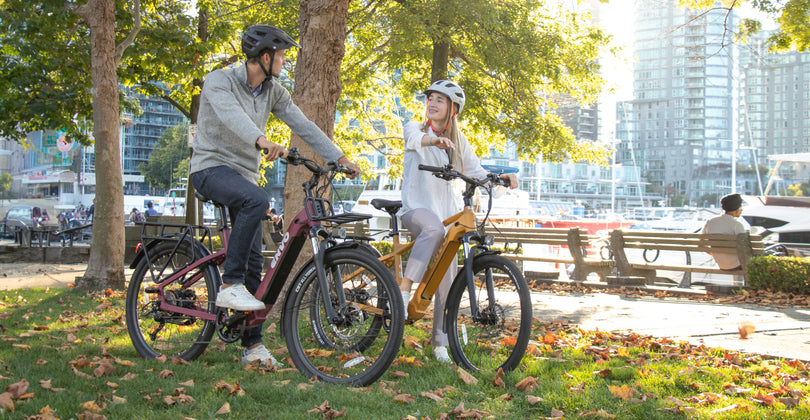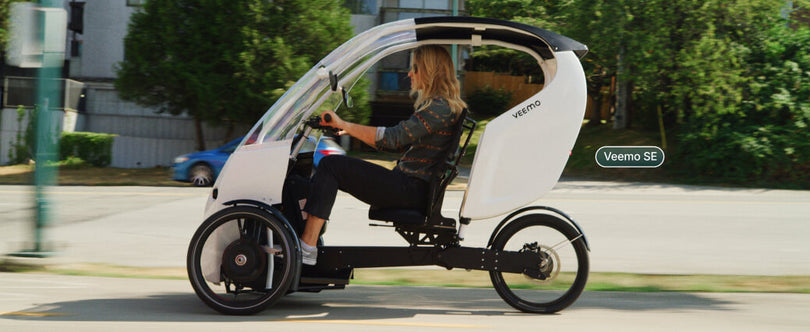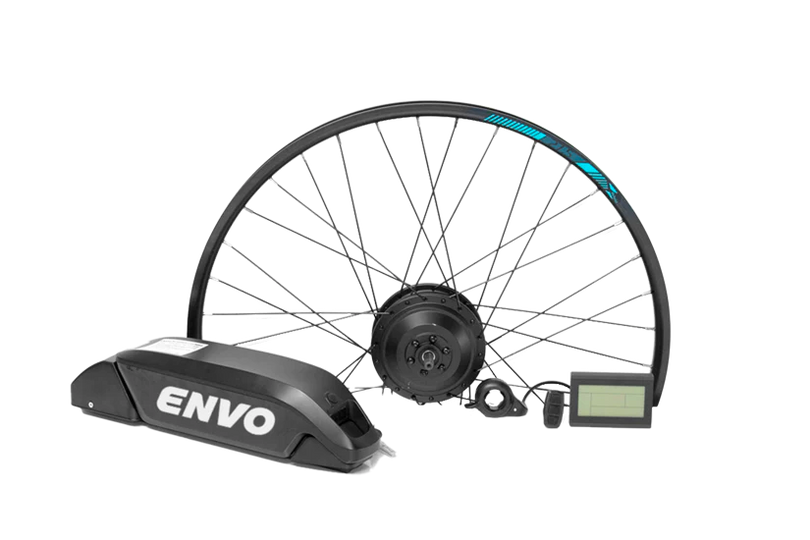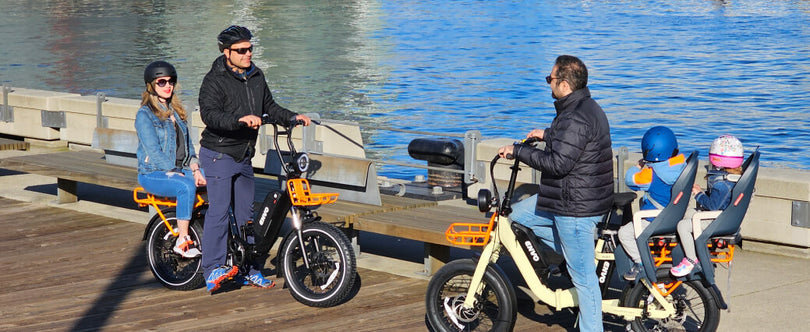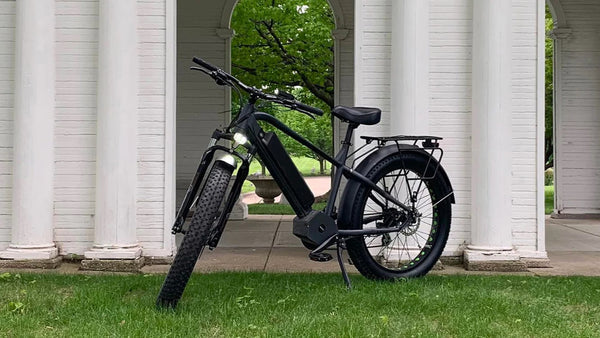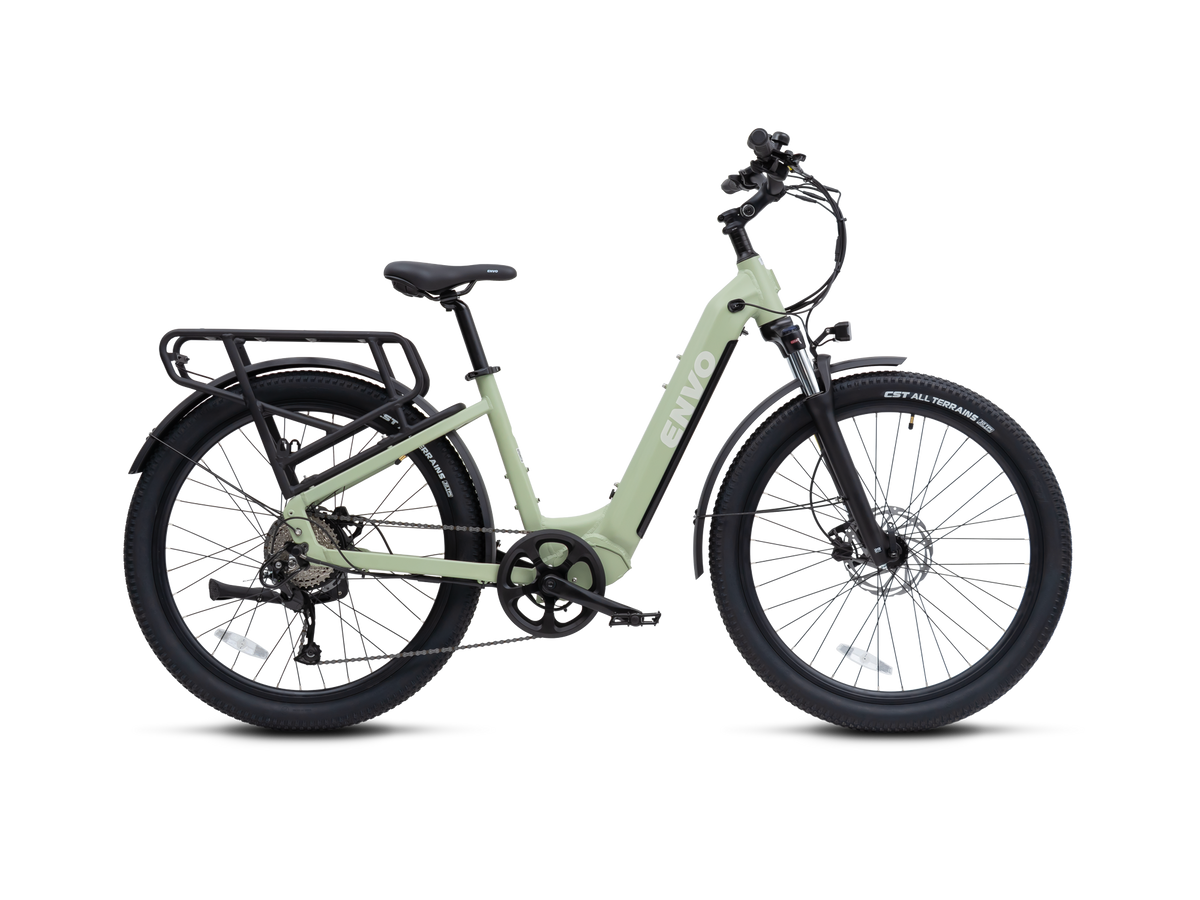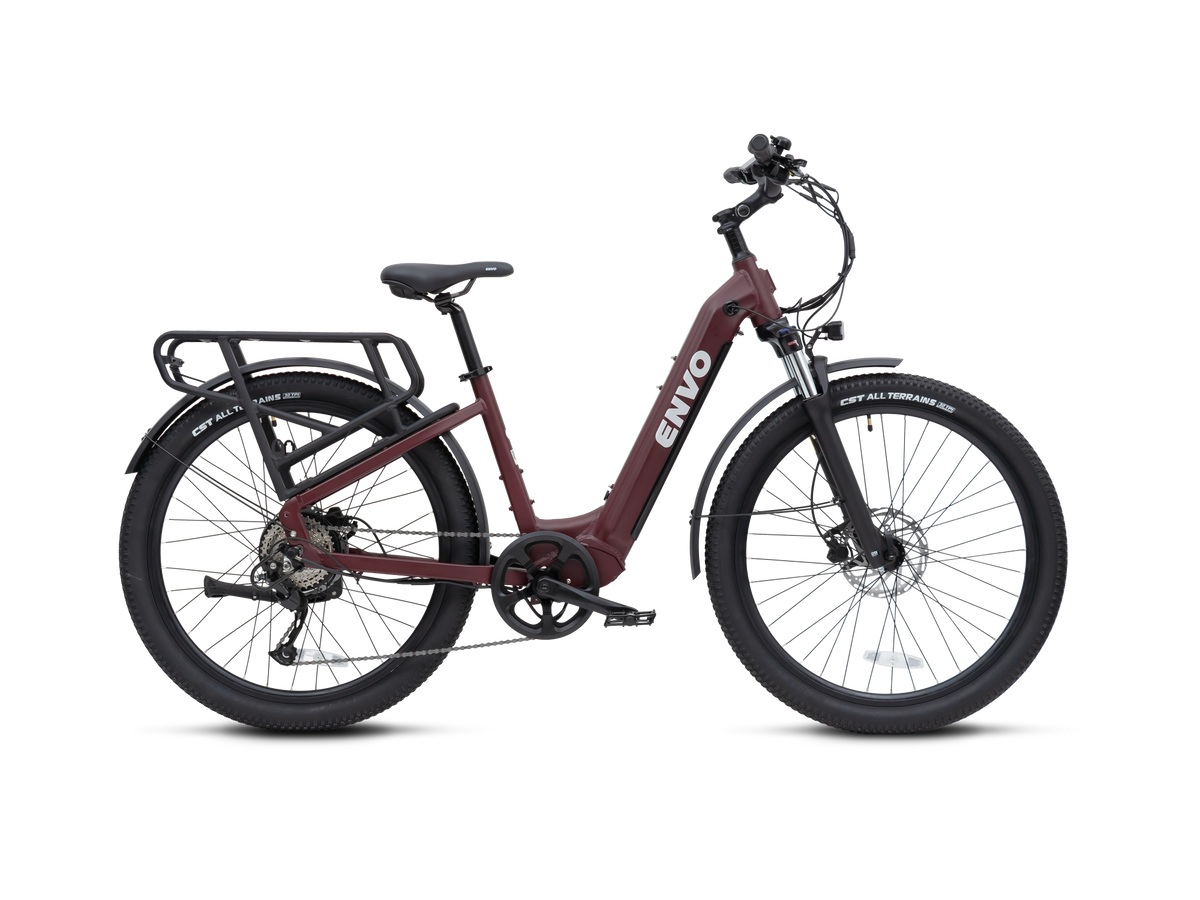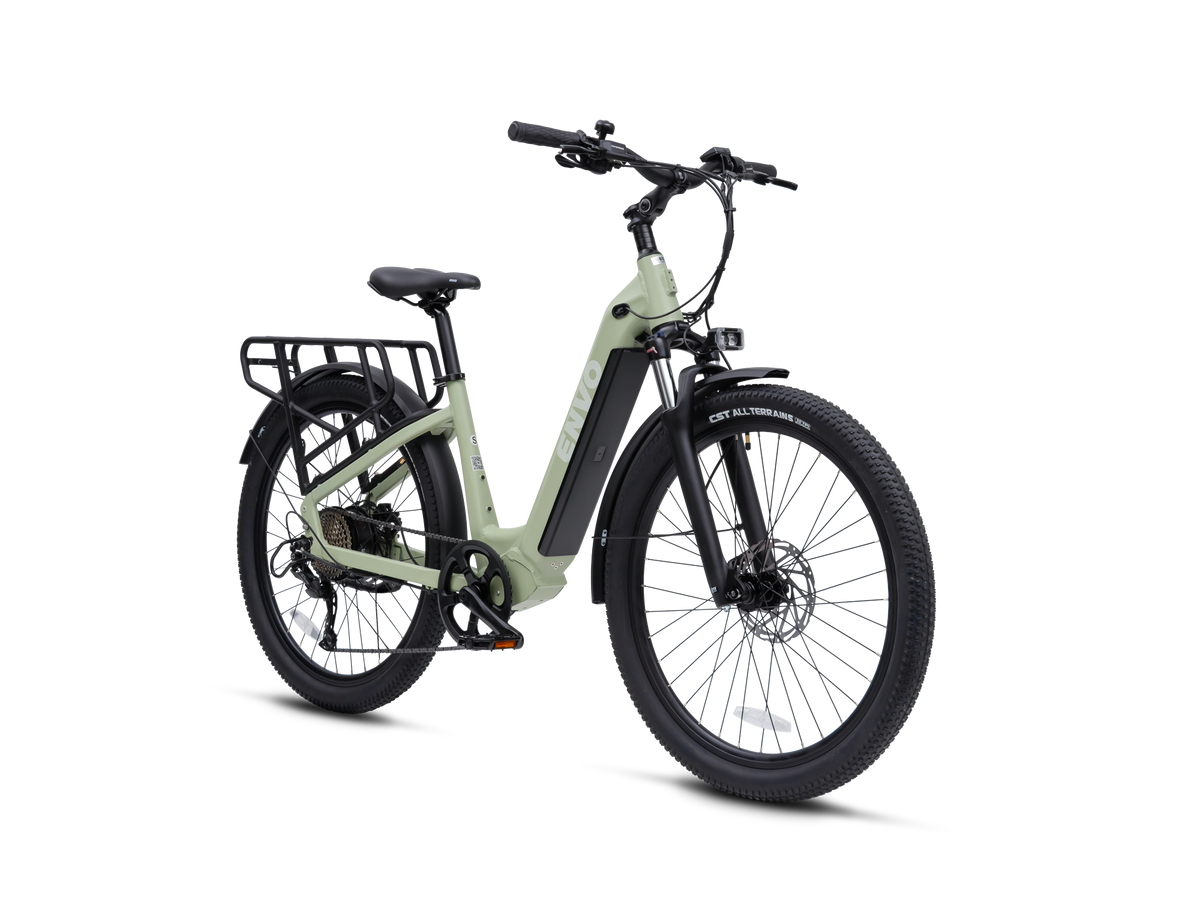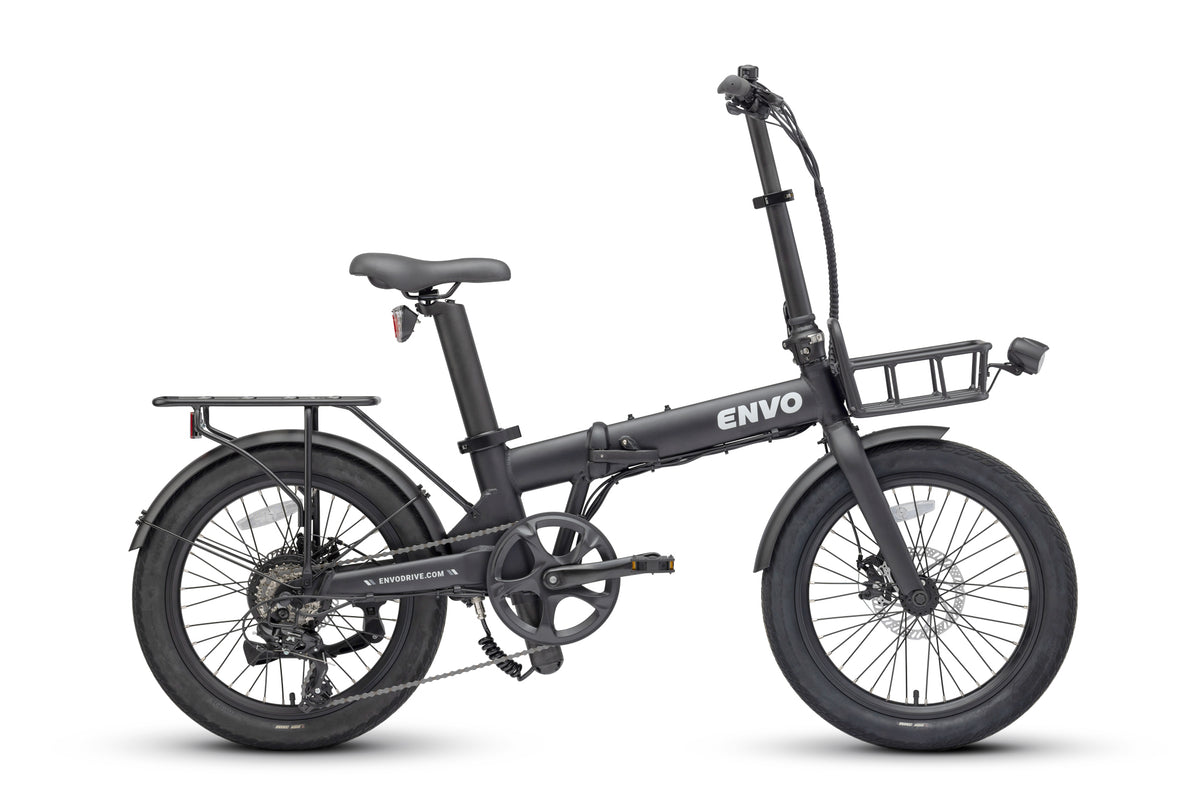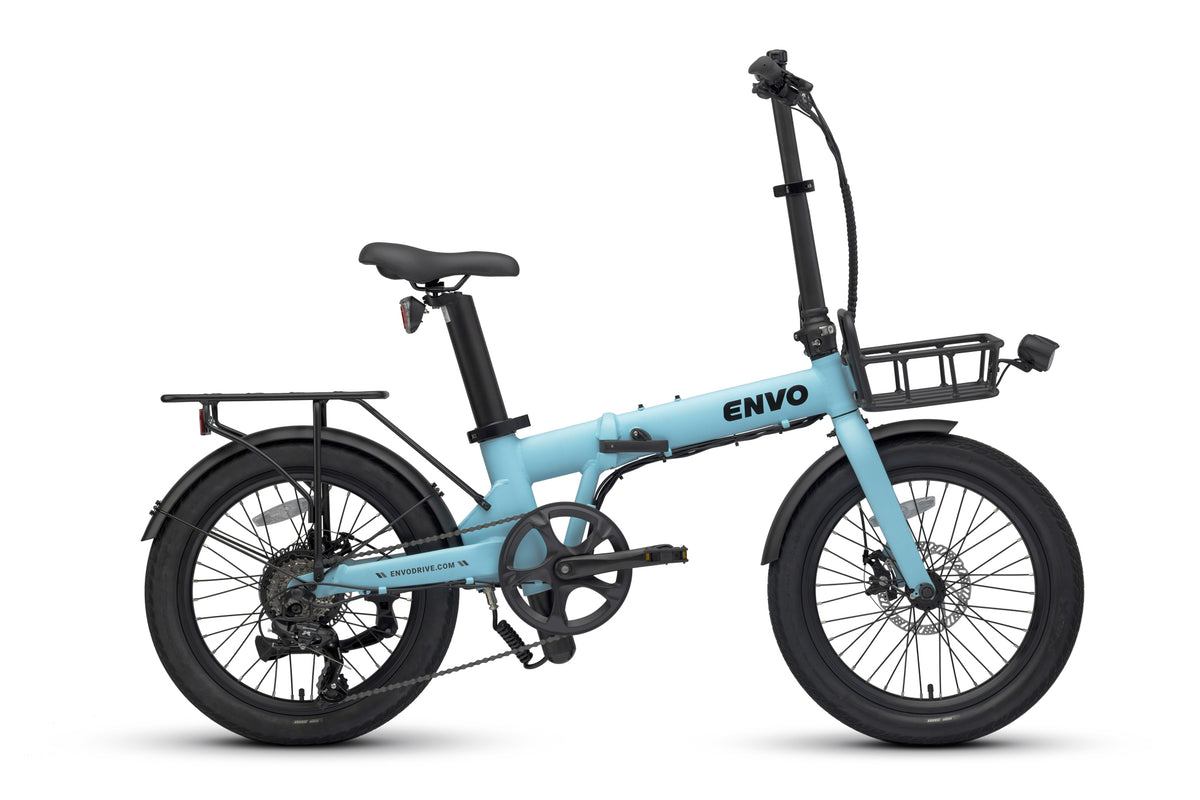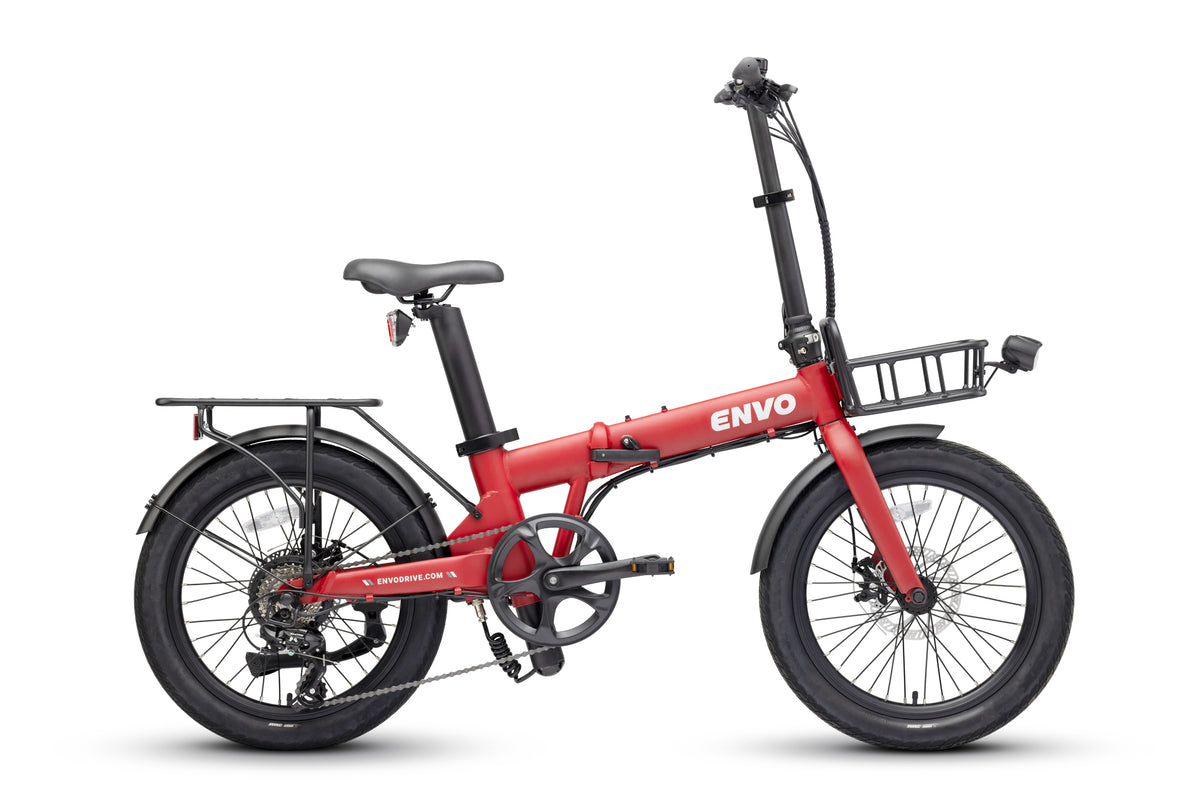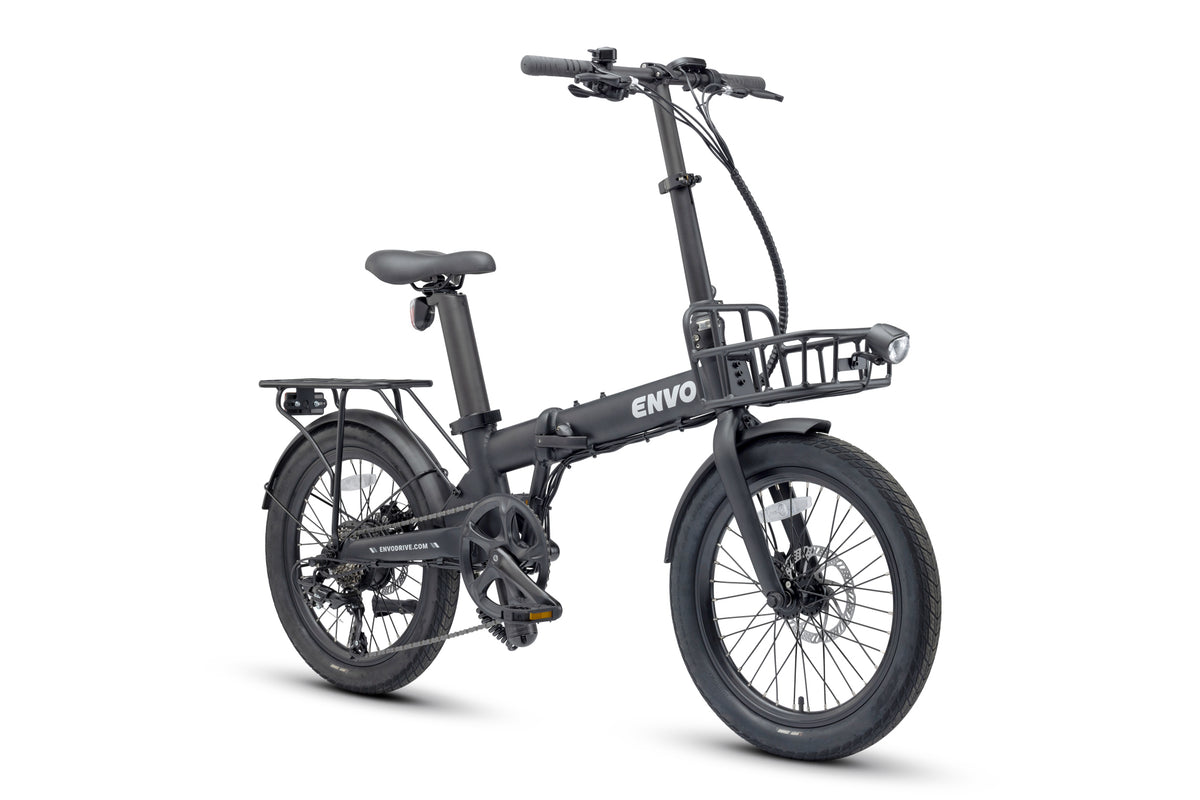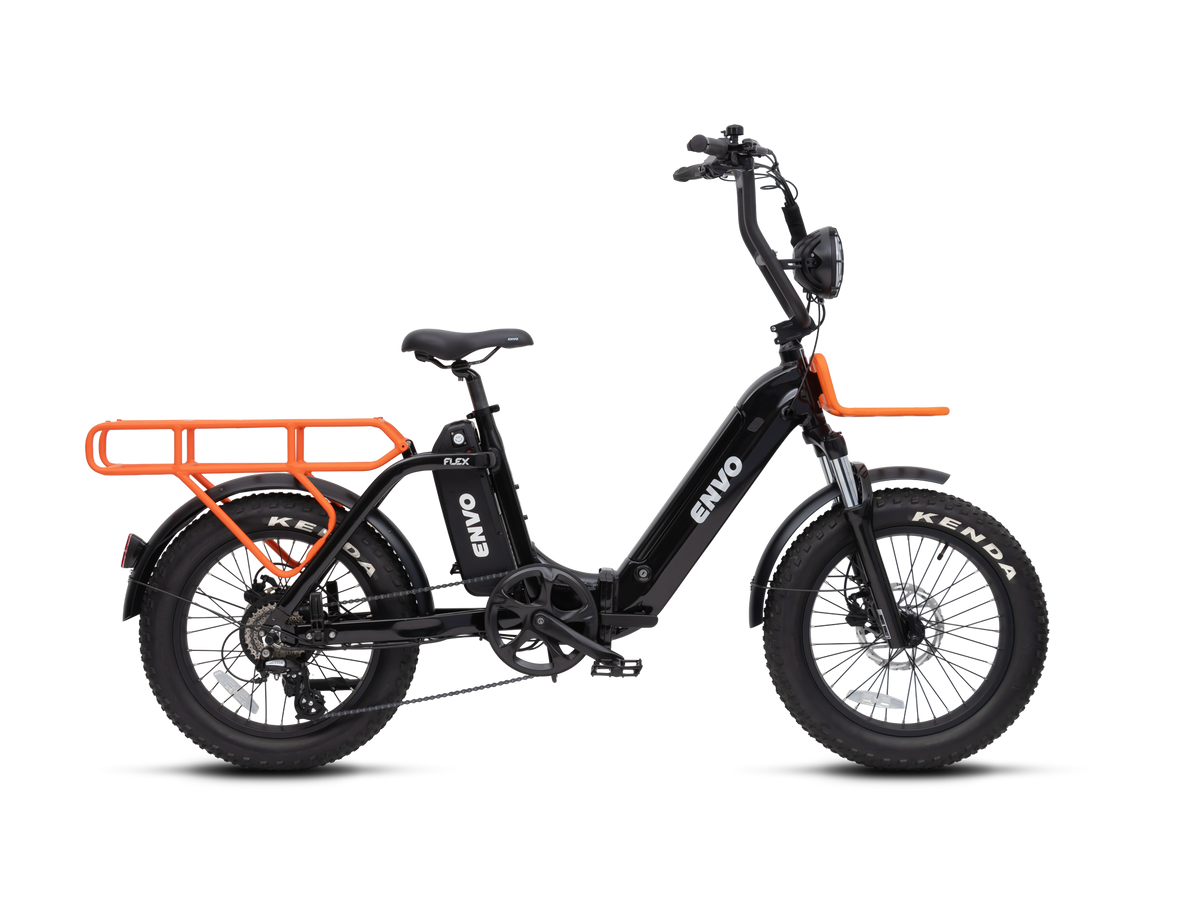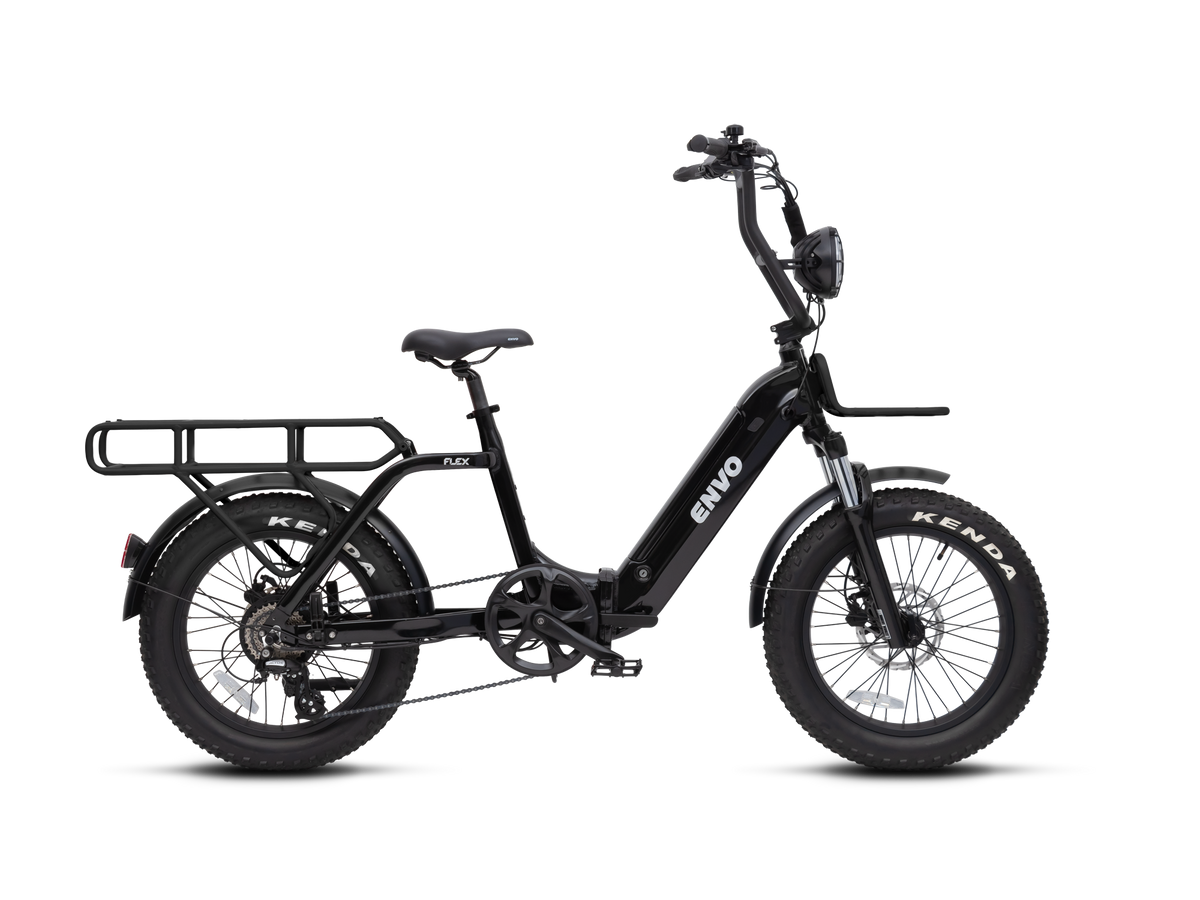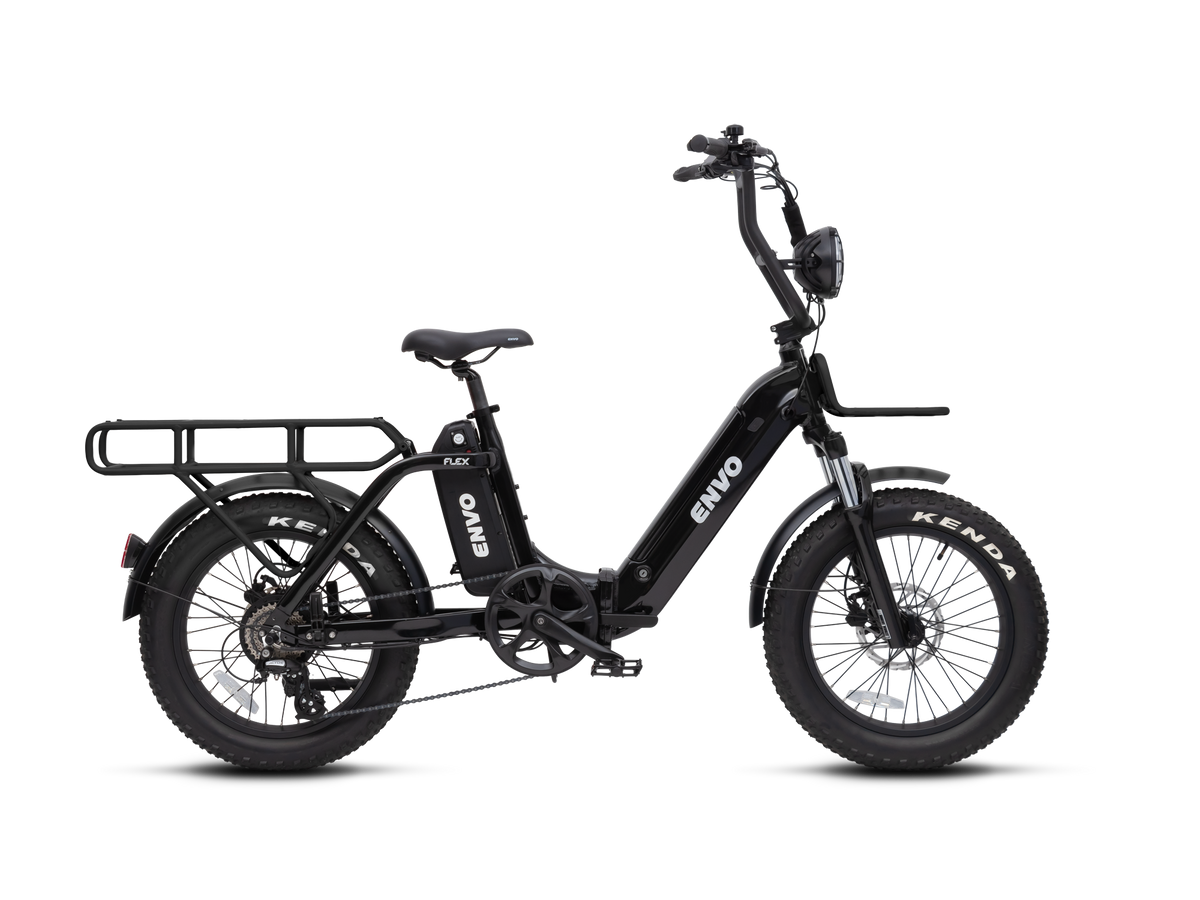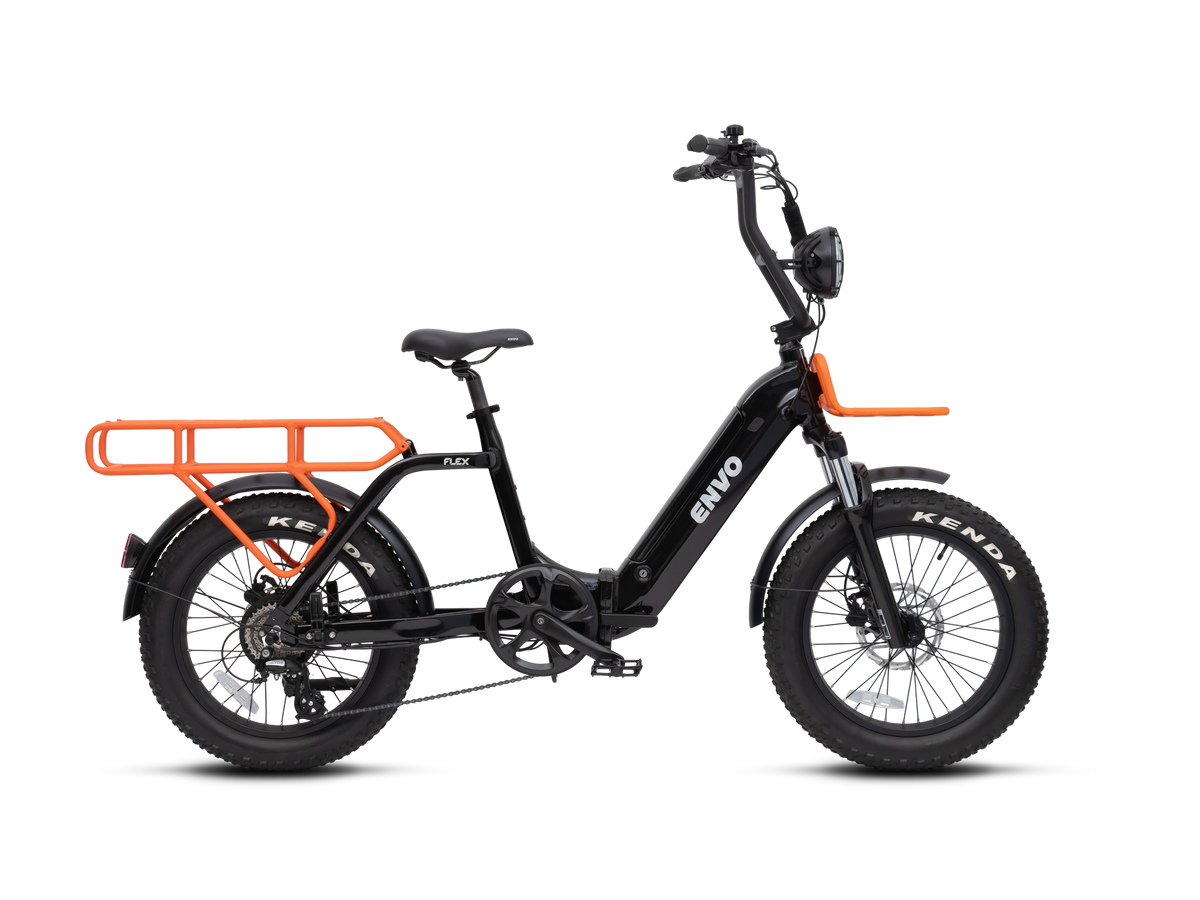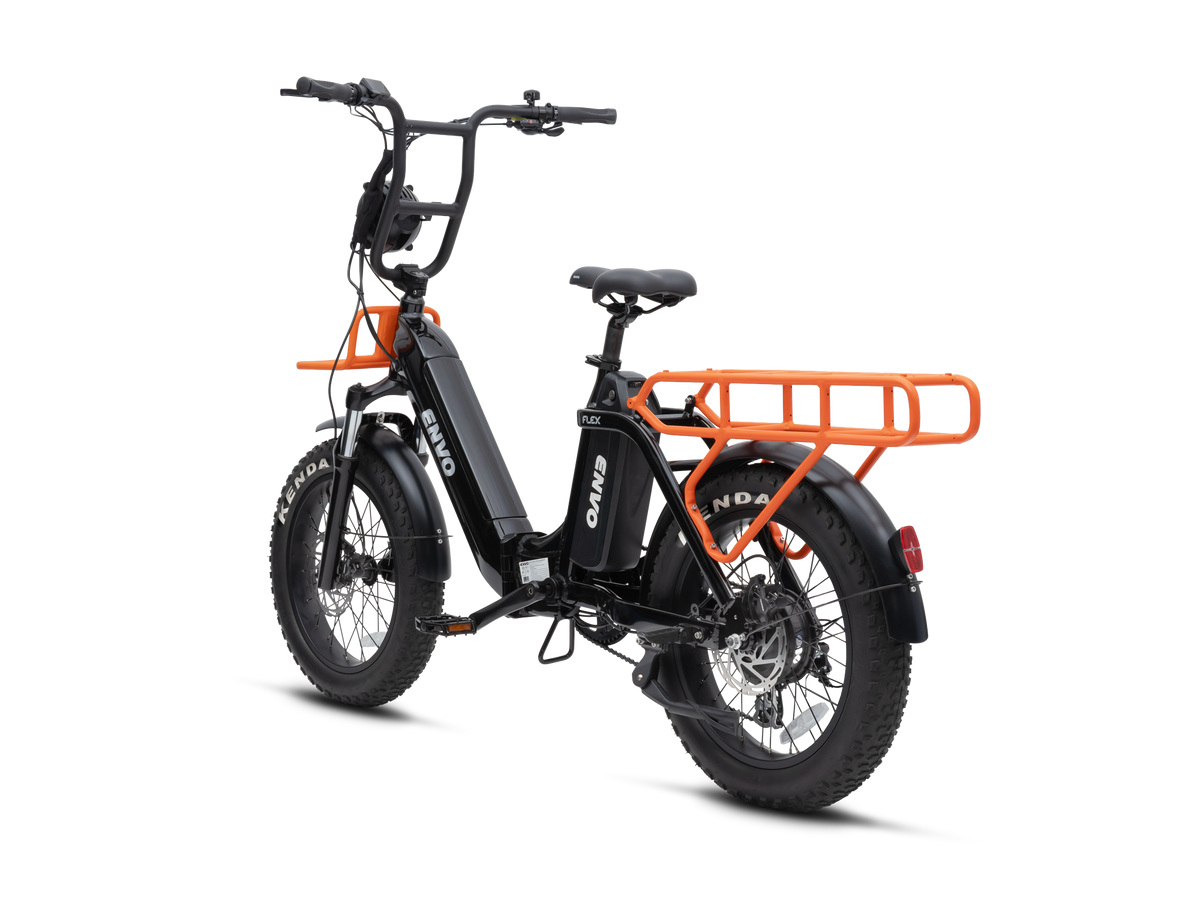Electric bikes are one of the fastest-growing modes of transportation, and it’s not hard to see why. They help riders go faster, further, and longer. Because of their popularity, there is a wide range of styles, motors, and price points that riders can choose from depending on their needs.
Motor positioning, and how it affects performance is one of the most discussed topics when it comes to e-bike purchases. It’s important to know the differences between the two main types of motor positioning: mid-drive vs hub motor.
At EbikeBC, we receive many questions about the difference between hub motors and mid-drive motors on electric bikes. We thought it would be a good idea to write an article outlining the differences between the two motor types. At EbikeBC, we sell both mid-drive and geared hub motor systems.Mid-Drive Motors

A mid-drive motor gets its name from its position on the bike. Located in the middle of a bicycle’s frame near the bottom bracket where the cranks are connected. The mechanisms required to coordinate the motor’s power with pedaling and shifting are a bit more complicated than hub systems so it is more expensive to maintain and it’s more important to be in the correct gear when riding an e-bike with a mid-drive motor.
Depending on the programming, the shifting will not feel as smooth as an e-bike with a hub motor. For example, if you don’t pedal with smooth, even pressure, you can experience power surges as you ride.
Some people love mid-drive motors, and in some instances, they absolutely make sense. Avid mountain bikers prefer mid-drive motors for technical riding because the centre of gravity is weighted at the lower-middle of the bike, which is preferable when navigating technical trails. The ability to better control the motor traction also fits well with the variable terrain encountered when mountain biking, particularly when climbing.
Generally, mid-drive motors require a specially designed frame to contain the motor in the center. For nearly all crank driven motor options on the market, such as Bosch, Shimano, Yamaha, Brose, or Bafang, the controller is integrated into the motor, making it simple for OEM electric bike manufacturers. On the other hand, this integration makes for maintenance and occasional repairs more of a challenge for the bike owner.
Hub Motors

A hub motor is located on the rear or front hub of the e-bike. It is completely sealed and self-contained and requires no additional maintenance.
A hub motor seamlessly delivers power where and when it’s needed, working independently of your pedaling and gear shifting and that is one positive point that it will not interfere with other parts or functionality in time of trouble. Overall, hub motors end up being a smoother ride because you don't need to worry about shifting as much, or maintaining proper chain tension and maintaining them is easier to do and cheaper as also replacement parts for them are cheaper than Mid-drive models.
Hub motors can be activated by pedaling or using a throttle. The motor uses either a cadence or a torque sensor. A torque sensor supplies more power if you push harder. The cadence sensor simply detects when you are turning the pedals and at what rate. The e-bike's computer smoothly turns the motor on at whatever level of power you have selected, eliminating the need to monitor what gear you are in.
Mid-Drive vs Hub Motors: Which one is Better?
Generally speaking, hub motors have proven to be more reliable and durable. Even if your hub motor fails, in most cases you still have a regular bicycle to pedal back home. On the contrary, failure in mid-drive system or bicycle transmission means you are stuck with a bike that may not move and it's heavier than hub motor bikes so not that portable. Furthermore, the maintenance for hub is next to none, but for mid-drive you need periodic maintenance and may be costly.
Performance-wise, it doesn't matter for the casual rider or urban commuters as the differences are relatively subtle. After a month or so, whatever system you are riding, you will have adapted to it and will be riding without a single thought about sensors and motors. We recommend you take both types of motors out for a test ride and see which one you prefer.
Why do most international e-bike brands use mid-drive motors?
The preference for mid-drive motors in many international brands is more of a policy response than a technical benefit, particularly if a brand wants to sell in the European market. In that case, they must comply with Regulation 168/2013 which states that the maximum allowable power for an electric bicycle is 250W. A mid-drive system uses the gears on the bicycle, so their torque is variable and can be greater than a hub motor of comparable size. This is the reason why international brands are forced to use a mid-drive system due to power limitations. This is not because mid-drive motors are more efficient; rather it is due to the variable nature of torque output.
On the other hand, the North American market has less stricter regulations when it comes to e-bikes; the allowable motor power is twice that of the EU, making hub motors infinitely more practical.
But what about side-by-side comparison? We have compiled a table that compares a mid-drive motor with a geared hub motor of comparable power. Hopefully, it can help you can decide!
|
|
Mid-drive (BAFANG BBS02 500W) |
Geared Hub Motor (ENVO 500W) |
|
Power |
500W Rated, 800W peak power |
500W Rated, 800W peak power |
|
Speed |
Up to 40km/h without speed limit setting |
Up to 40km/h without speed limit setting |
|
Torque at the wheel |
100Nm peak if used in the lowest gear of bike with the 1:1 ratio |
80Nm Peak no matter what gear is selected |
|
Grade climbing |
~25% with a 75KG rider without pedaling |
~20% with a 75KG rider without pedaling |
|
Weight |
4.5Kg |
3.3Kg |
|
Pedal assist behavior |
Motion sensor |
Motion sensor |
|
Ease of installation |
Needs special tools and transmission adjustment skills |
No special tools, No transmission interfere |
|
Adaptability to various bikes |
Bottom brackets of 68,73mm with no chain Mud-guard support |
100mm, 135mm, 165mm axle length with 10mm drops out forks. It does not work on Thru-axles forks |
|
Ease of maintenance |
Motor and transmission need frequent maintenance, adjustment, and replacement of parts. |
Maintenance-free |
|
Durability and Reliability |
Since the power and tension add up with the muscle tension and transfer through the chain to the rear cassette of freewheel, stress and wear are much more pronounced than normal conditions. The transmission is subjected to wear and breakage; especially when used in the improper gear or improper change of the gears. |
Much more Reliable and durable with no mechanical part engaged in transmission. The motor’s internal parts are dis-engaged by the internal clutch when the motor is not in use. So, the worst-case scenario in case of a defect means that the motor acts as a set of ball bearings. |
|
Dynamics |
Motor weight is attached to the frame and the wheels have the normal weight |
The difference between the regular hub and the hub motor weight is added to the wheel mass |
|
Free wheeling |
100% freewheels when the motor is not assisting |
100% freewheels when the motor is not assisting with no gears noise or magnetic cogging torque. |
|
Protection degree |
It claims to be IP65, but near an IP54 in our experience. |
IP65 |
So, which one is better? Mid-drive or Hub motor?
Well, it depends! Both systems have their advantages and disadvantages. The final answer may depend on the sort of usage you have in mind for your e-bike. We believe that for a casual urban rider a geared hub motor is the best fit, as it requires less maintenance and provides a more reliable system. A few applications really need to lean toward mid-drive motor, but unless you are in that group of riders that ride technical single track and steep climbs, the reliability and maintenance-free features of the geared hub motors is your best choice.

